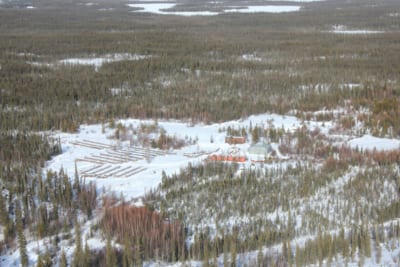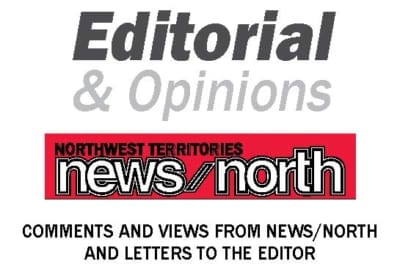The end of November reminded anyone living under a rock of mining's foundational role in the Northwest Territories.
The Yellowknife Geoscience Forum brought a who's who of industry heavyweights to the capital for days of symposiums and hobnobbing and climaxed with the ritzy MAX Awards, presided over by Industry, Tourism and Investment Minister Katrina Nokleby, who for more than a month now has had responsibility for the GNWT ministry charged with overseeing and supporting the sector that accounts for a third of the territory's GDP -- more than any other.

NNSL file photo
Then, like a bolt out of the blue, a new protected area appeared in the Sahtu, a repository of biodiversity and a sacred harvesting ground to the Indigenous and Metis. Much jigging followed, stunning aerial photos of the Ramparts River watershed were distributed. The habitat of grizzly bears, caribou, wolverines and owls will be protected for generations to come by the agreement's signatories.
The NWT is a complex place. The more than 10,000 square kilometres now called the Ts'ude Niline Tuyeta, has existed in balance forever. Mines, which have existed for only the last blink of that time, and which – at least as far as the NWT's three diamond mines are concerned – are within a few years of winking out, are nonetheless the bed we continue to make for ourselves.
For every loonie of economic activity the NWT generated in 2018, one quarter, one nickel and one dime came directly from mining. That's rounding down, and amounts to more than twice times the $716 million generated by public administration, that favourite punching bag of so many taxpayers up here.
Include the spin-off effect helping to sustain other industries like transportation and warehousing, construction or financial services, to name a few, and the figure grows.
The territory needs change. But the North is nothing if not a lesson in the perils of rushing in. As places like Ts'ude Niline Tuyeta are recognized legally as worthy of protection, and placed in the care of the Indigenous peoples connected to them, these communities will increasingly have the opportunity to demonstrate how it should be done.
That will probably look something like how it was done well before the mines arrived. The idea of the land as a bank of value to Northerners has appeared in these pages, the concept surfaced again Nov. 26 at the celebration in Fort Good Hope. The land is precious but even in protecting it from industrialization, only as many as eight jobs could be created.
The next day, with the Sahtu still dominating the news cycle, the GNWT issued a news release reminding Northerners that some of the people schmoozing at the 47th Geoscience conference were Premier Caroline Cochrane and her cabinet.
They were carrying the GNWT banner to hammer home the message that "increasing resource exploration and development is a priority."
They were also there to build relationships and "to hear ideas on how to advance the territory's main economic driver." Nokleby told the miners they would find "allies" in the GNWT eager to help them "responsibly develop our vast mineral resources," and committed to "building the bridges, roads, and energy infrastructure needed to advance resource development."
Those eight jobs will be welcome in Fort Good Hope but the reality is that for the rest of the territory to lift off, the golden goose of mining will have to continue to flap its wings. Hopefully, cabinet took to heart the sage advice they had at their disposal at the forum.
